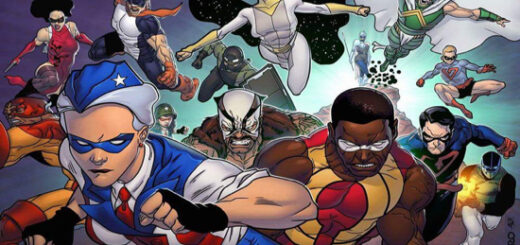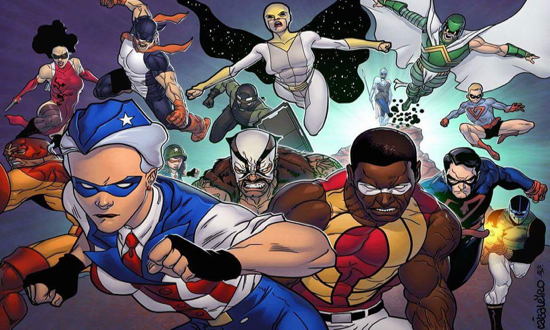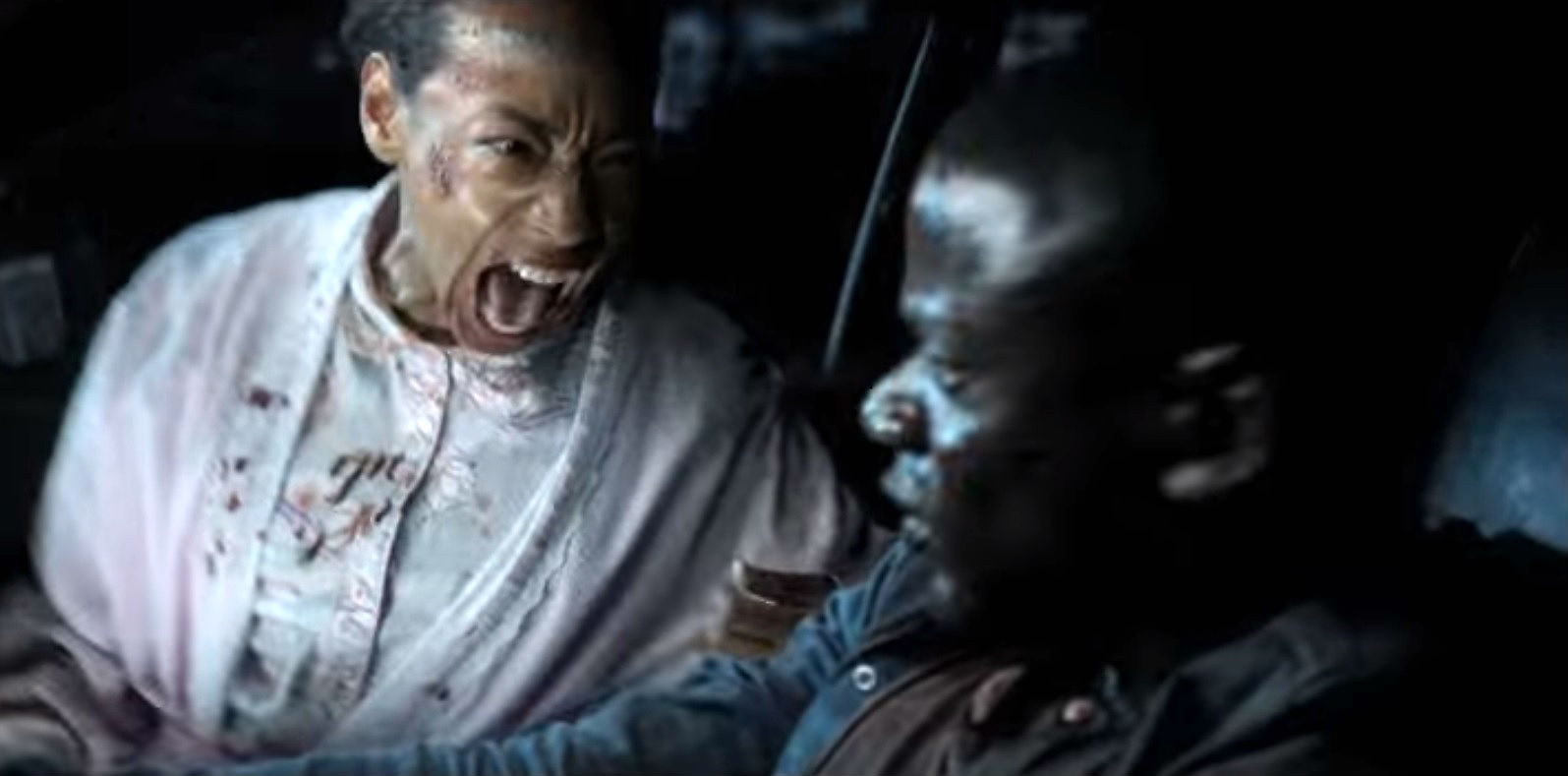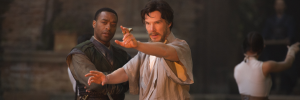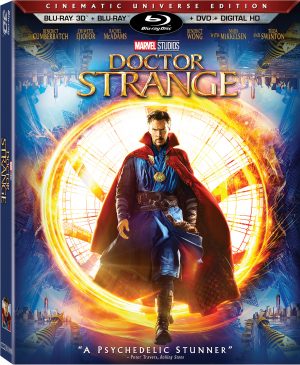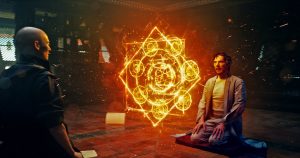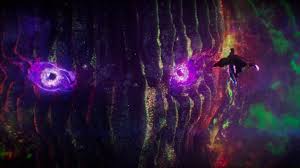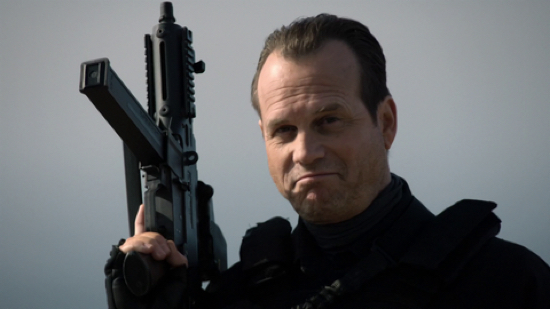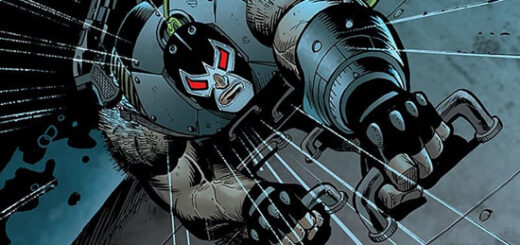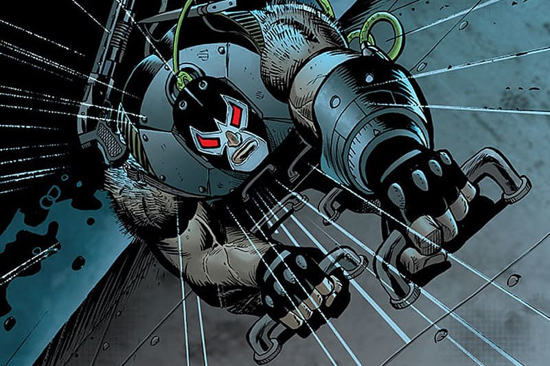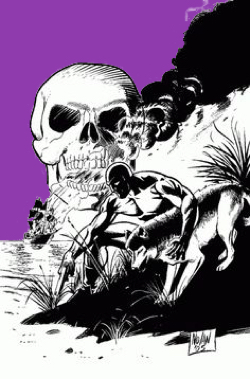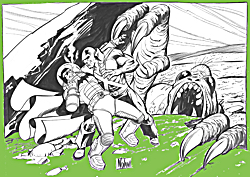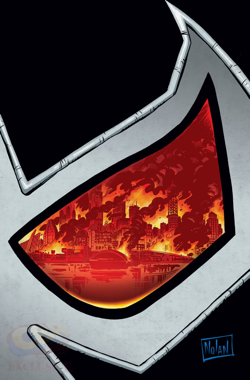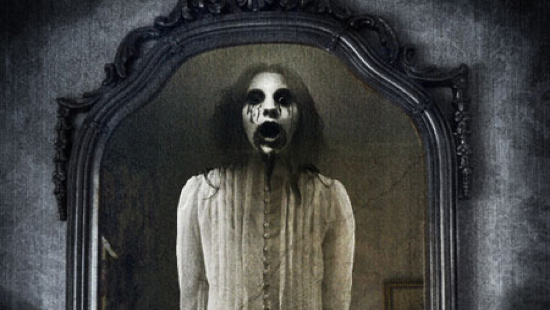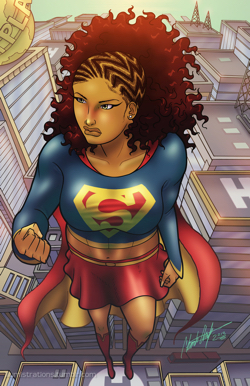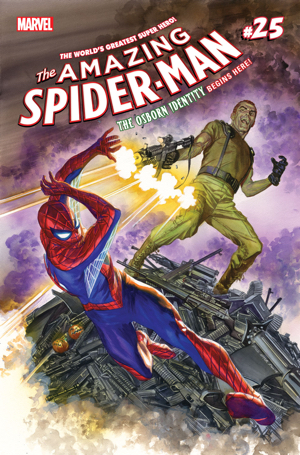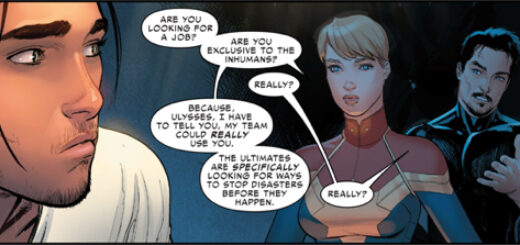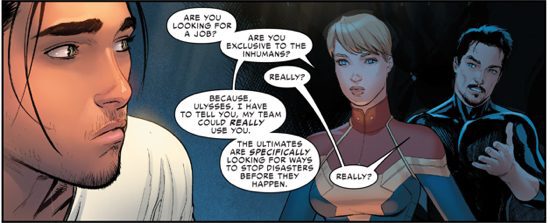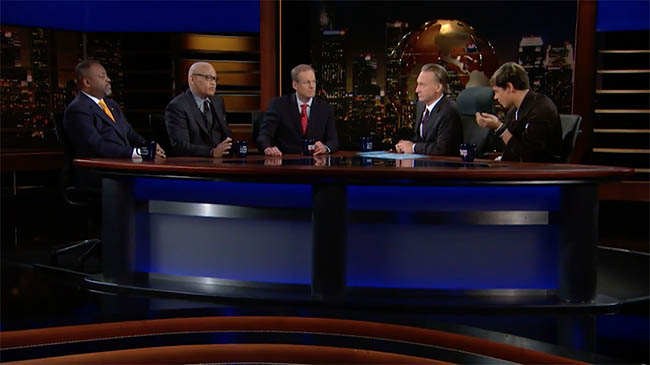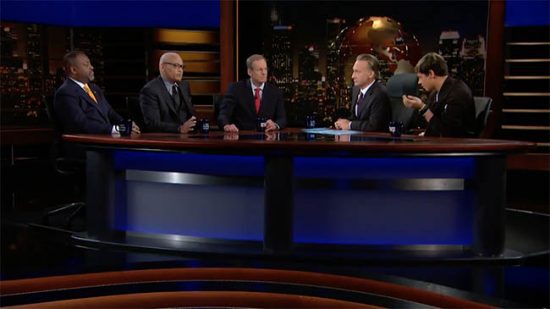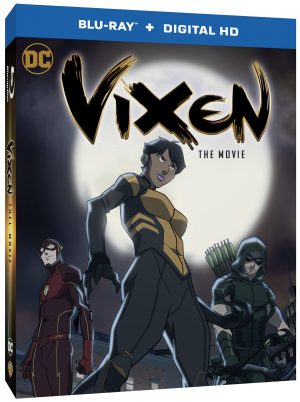Joe Corallo and The Golden Guard
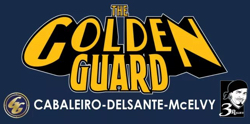 This week will see the launch of a Kickstarter campaign for a new comics project, The Golden Guard, by Vito Delsante, Charlie McElvy and Carlos Caballero. I got a chance to talk with Vito Delsante the other day.
This week will see the launch of a Kickstarter campaign for a new comics project, The Golden Guard, by Vito Delsante, Charlie McElvy and Carlos Caballero. I got a chance to talk with Vito Delsante the other day.
JC: I think it is fair to say you’re a big comics fan, and particularly of legacy superheroes. What is it about them that makes you want tell their stories?
VD: I think it’s less about the legacy and more about how the most current person in the line handles the responsibility of the mantle. Like, if you’re the most current Phantom (Lee Falk’s character) and you’re 24, let’s say, your reality, your Africa/Bengalla, is totally different than your grandfather’s. So, there’s a real chance, as a storyteller, to push the idea of legacy further. That’s what Sean and I try to do with Stray; there’s a reason why he’s not Doberman III or the Rottweiler. He chose a different path.
JC: How do you apply that passion uniquely to your new creator-owned title, The Golden Guard?
VD: Well, instead of taking the idea of the legacy hero, the one who has been almost genetically predisposed to being the latest in the line of heroes, we bring a few of the characters to the present to see exactly what the impact of their individual legacies are. There are four characters in particular who are in the present and they find out they’re actually dead, or in the case of Kid Viper, MIA during the Vietnam era. So, if you’re able to come 30 or 40 years beyond your death, and you are able to, for lack of a better word, “shape” your own personal history, how do you do it? What will you truly be remembered for? That’s the aspect of legacy we’re playing with.
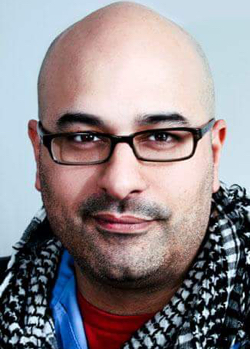 JC: Tells us a bit about your collaborators, Charlie McElvy and Carlos Caballero. How did you all decide to work on this together and what’s everyone’s responsibilities on the project? Is anyone else involved?
JC: Tells us a bit about your collaborators, Charlie McElvy and Carlos Caballero. How did you all decide to work on this together and what’s everyone’s responsibilities on the project? Is anyone else involved?
VD: Originally, this was going to be a story that Ray-Anthony Height and I wrote with Sean Izaakse doing layouts. My Prisoner Of None co-creator, David Bednarski, provided a lot of the initial designs that Carlos would eventually play with. I’m not sure if we ever got to a point where we knew who would do the finished art, but that was who I was working with when initially conceived. After a while, Ray couldn’t do it; he decided that his efforts were best put towards finishing Midnight Tiger, and I agreed. So, I turned to Charlie. Charlie and I “met” over a shared interest in Sean; Sean designed a lot of characters for his Watchguard comic/RPG. And truth be told, it was seeing Sean’s work with Charlie (on DeviantArt) that drew me to his art (and the rest is history).
So, there was a bit of professional envy, I think, on my part. I met Charlie at Baltimore Comic Con, bought a few of his books and somehow, somehow, I “fell in love” with the dude. Loved where his head was at, and loved what he was building. Charlie doesn’t realize what a big influence he has on me, and that’s probably going to make him laugh when he reads this. Fast forward, and Charlie and I are working on a Watchguard/Aegis (my superhero team from Stray) crossover that could still see the light of day someday, and I just convinced him to tackle Golden Guard with me.
Oh, I need to say this here…hat tip to Lan Pitts who gave me the name “the Golden Guard.” Because what happened next doesn’t happen without the team being named.
So, we’re being pretty blatant and we’re talking about the team and comic that doesn’t even exist on Facebook. Carlos had already been in my head as a potential artist to work with because I once carelessly said, again on Facebook, “I know who would write a TeenAegis spin-off (Caleb Monroe), but who would draw it?” Carlos was one of a few artists that chimed in with, “me!” and I looked at his work and said, “I have to keep him in mind.”
So, Charlie and I are “flaunting” Golden Guard, and at roughly the same time Carlos posts fan art of the Justice Society. I sent a private message to Charlie and said, “I didn’t realize we were holding auditions, but I think this dude won the part!” Turns out, Carlos and I have history. I met him at San Diego Comic Con in 2006 and shortly after, I emailed him saying, “Let’s start brainstorming an idea!” He never replied! Hahaha! But, everything happens for a reason. He says he wasn’t ready for that kind of work, and I surely wasn’t the writer I am today. And it all just…the three of us talk daily on Facebook Messenger. We’re extremely tight. Carlos and I shared a table at NYCC last year and it’s really the most perfect three-person combo since Nirvana. We complement each other really, really well.
JC: Legacy superheroes are at the heart of another creator-owned title of yours, Stray. What makes these two properties stand out from each other?
VD: Stray is about one man’s quest to find himself and find the hero inside of himself. I’ve said for a long time that it’s about identity and choosing the person you want to be. Stray is me at my most Joseph Campbell-ian. The Golden Guard is really pushing the idea of history and legacy forward, but we realized this week that it’s really bigger than that. We knew Americana would be the leader, and Cadmus, once Carlos designed him, just became our favorite character. And as we kept going further into it, and developing more characters, we started to see that our favorite characters, our story linchpins, were all the…best way to say this is, non-white male (but not quite; stay with me) characters. And this week, I realized that what we made was a team comprised of marginalized minorities. A woman, a black man, a gay man, a handicapped (mute) man, two teenagers…even the elderly. It wasn’t until this week that we realized just how special the book is and can be.
JC: You’ve gone the Kickstarter route for other projects of yours before The Golden Guard. Why do you feel Kickstarter is the best avenue for this project?
VD: Let me be perfectly honest with you… Kickstarter is not the perfect avenue. Having a publisher pay our page rates and publish the book and pay us a ridiculous amount of money in royalties would be the perfect situation. But, that’s not happening and it’s kind of by choice. I don’t think that every retailer would support this book. We’re talking about a team book that more or less points an accusing finger at the recently elected administration, and I distinctly remember in the past few weeks seeing the headline “Keep Your Politics Out of My Comic Store.” If retailers won’t support the book, then a publisher won’t publish it. And the three of us agreed that the thing we wanted to do the most was connect directly to our audience. And that’s why Kickstarter is… if it’s not the perfect avenue, it’s the next best one.
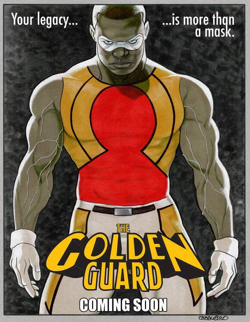 JC: As a father, I imagine comics accessible to a younger audience is important to you. What age range would you recommend The Golden Guard to? Can you share your thoughts about the importance of younger comics readers, both to you and the industry as a whole?
JC: As a father, I imagine comics accessible to a younger audience is important to you. What age range would you recommend The Golden Guard to? Can you share your thoughts about the importance of younger comics readers, both to you and the industry as a whole?
VD: I think that pre-teens and tweens are a safe age range for TGG, but we’re not putting sex or drugs or anything like that in the book, so you could go as young as 7. There’s a big historical component to the book, and I think that will appeal to a lot of readers, of all ages.
I think superhero comics are easily maligned. People still make the case that it’s unhealthy (male?) power fantasy made accessible to children, but my daughter, who just turned four, is currently watching DC Superhero Girls. Do you know what lesson she gets out of it? Be a good friend. Be brave. Being smart is as important as being strong. Superhero comics, and movies, should be saying that.
This is what is so frustrating about things like Batman V Superman; you’re assuming that because the comic audience is predominantly male and roughly 24-50, that the best representation of these characters is a Frank Miller book from the 80s. And that’s not a slight against Frank or The Dark Knight Returns. I’m 43 and I remember a time when the mantra in comics was, “They’re not just for kids anymore,” and the result of that was chasing kids away. And the industry has spent 30 years trying to get them back. Thankfully, things like Squirrel Girl, Lumberjanes and the like exist. There’s still plenty of “grim and gritty,” but the industry has proven it can support both.
For me, my goal is to enforce the idea that “all-ages” doesn’t mean “kids.” Ideally, parents will sit and read my books with their kids, and I know a few who have. Stray, which is literally rated T for Teen, has drug usage and a hero who is flawed. I think that’s something a 9-year old should see… they should see that you can make mistakes but if you’re inherently a good person, if you are sorry for the mistakes you’ve made or the bad you’ve done, you can be a hero. My goodness, that is such an important lesson for… for everyone!
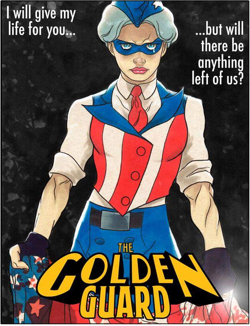 JC: The Golden Guard will be featuring a wide range of characters including Black Viper, an anti-hero. How big of a role will these side characters have and can you tell us about the importance of anti-heroes to you in comics?
JC: The Golden Guard will be featuring a wide range of characters including Black Viper, an anti-hero. How big of a role will these side characters have and can you tell us about the importance of anti-heroes to you in comics?
VD: I have to be careful because I can say too much. The core team is made up of Americana, the aforementioned leader; Cadmus, her second in command; King Jaguar, the devil-may-care swashbuckler; Silent Shield, the former G-man turned crimefighter; Honorata, Charlemagne’s thirteenth knight; and Kid Viper, the first sidekick of the Golden Age. They meet up with their teammate in the modern world, Theo Concord, a.k.a. Captain Scarab, who is now in his 70s or 80s. Readers will meet the entire team at the beginning of Chapter One, but by Chapter Two, this will be the team.
JC: Sidekicks will also have a role in the TGG story, which is similar to the focal point in your prior work, Stray. What’s the importance of Sidekicks and their legacy to you, and what makes them important to The Golden Guard?
VD: They’re not incredibly important to the larger story in The Golden Guard, but I wanted to make sure that we had one represented (or three, when you see the finished book). And that’s probably because the concept of the sidekicks is important to me. As a kid, I wanted to be Robin, and I’ve always felt that Dick Grayson, as Robin, Nightwing or even Batman, is the character that I relate to the most. I’m currently wearing a “Grayson” t-shirt! Kid Viper is thought to be, in this universe at least, the proto-sidekick. And if that’s the case, you have to tell his story. Like I said, we’re taking marginalized minorities, and in this case, the idea of millennials (which he technically isn’t, but he will end up representing).
JC: As someone whose been published by many publishers over the years and has worked on both established properties and creator-owned work, what kind of advice would you give to writers trying to get their work out there and what do you want to see coming from the comics industry as new creators come in?
VD: I usually tell writers to just keep writing. Get all the bad pages out and just keep your head up. I think the days of trying to break into the Big Three or Four or whatever it is… well, that’s indicative of the fact that all things are kind of equal now… but I think those days are over. There are so many avenues available now that you don’t have to break in the same way as someone else. Save your money, find an artist to pair up with. Go.
JC: Before we wrap up, what else should we know about The Golden Guard?
VD: I think backers and casual observers might be surprised to find out that we’re one, putting out a magazine, two, putting it out annually, and three, also including a tabletop roleplaying game with the characters (including a pull-out map!). In the spirit of creating a relationship with our readers, we wanted to make something they could rely on. So, if we’re successful in March (and I have a lot of faith that we will be), every subsequent March (2018, 2019, etc), we will put out a new Golden Guard story which will also expand the RPG. Eventually, we’ll crowdfund a collection for both the comic and the RPG. And we’ll take the same amount of time to make it, and put it out by October. Every. Year. We’re just trying to stand apart from what we’ve seen, and make something we want to own.
JC: That sounds great! Thank you so much for chatting with me, Vito! Follow The Golden Guard on Facebook to get all the latest updates and don’t forget to check out the Kickstarter when it launches this Thursday, March 2nd.

